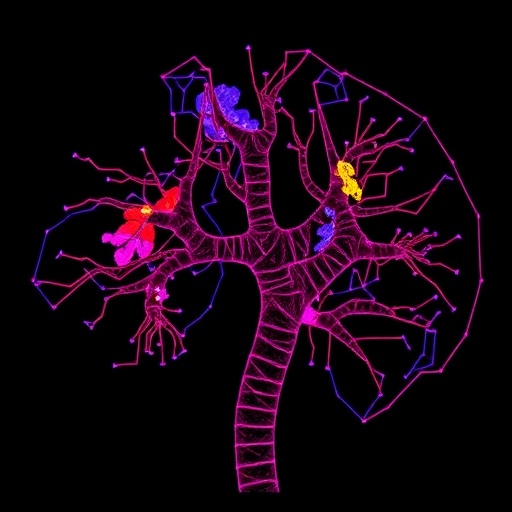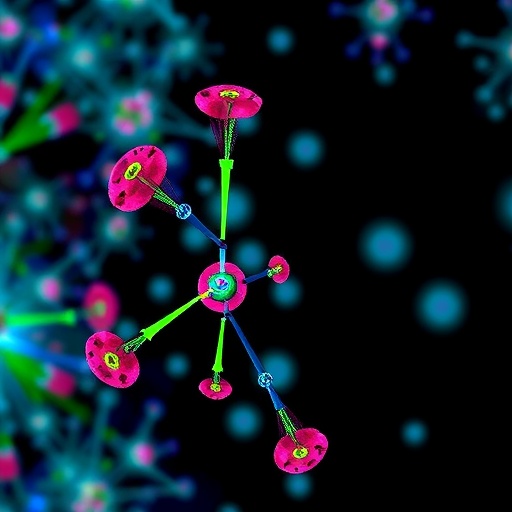Prostate cancer remains one of the most pervasive and challenging malignancies affecting the male population globally. Despite notable advancements in early diagnosis and localized treatment, therapeutic options for advanced or metastatic prostate cancer continue to face significant barriers, including resistance to conventional therapies and poor patient outcomes. As a consequence, the imperative to uncover novel molecular mechanisms driving prostate cancer progression has never been more pressing. Recent research has identified the small GTPase RAB26 as a critical player in prostate tumor biology, unveiling new avenues for prognostic evaluation and targeted intervention.
Emerging from the study of intracellular trafficking regulators, RAB26 has attracted attention due to its role in cell signaling and vesicular transport. Through meticulous single-cell RNA sequencing analysis (notably from dataset GSE141445), researchers have delineated the expression landscape of RAB26 across heterogeneous prostate cancer cell populations. The data reveal a pronounced expression of RAB26 in luminal as well as basal and intermediate prostate cancer cells, suggesting its involvement across diverse cellular compartments within the tumor microenvironment.
Intriguingly, elevated RAB26 expression correlates robustly with pathological aggressiveness. Statistical analyses demonstrate that higher RAB26 levels are significantly associated with advanced tumor stage, elevated Gleason scores—a hallmark indicator of prostate cancer severity—and worse clinical outcomes measured by progression-free and disease-free survival metrics. This association underscores RAB26 not only as a biomarker of tumor burden but potentially as an active contributor to malignant progression.
Functional assays conducted in vitro lend substantial weight to this hypothesis. Experimental overexpression of RAB26 enhances prostate cancer cell proliferation, augments migratory and invasive capabilities, and confers resistance to apoptotic stimuli. Moreover, RAB26 expression fosters the maintenance of stem-like properties in prostate cancer stem cells (PCSCs), which are implicated in tumor initiation, metastasis, and therapeutic resistance. Enhanced sphere formation assays substantiate the role of RAB26 in sustaining these renewal-capable cellular subpopulations.
To elucidate the molecular underpinnings of RAB26’s oncogenic influence, researchers turned to transcriptome-wide profiling. The results spotlight the activation of the MAPK/ERK signaling cascade as a pivotal downstream effector of RAB26. This pathway is well-documented for governing cell proliferation, survival, and motility, and its aberrant activation is a common feature in diverse cancers. Importantly, the study connects RAB26 activity to the promotion of epithelial–mesenchymal transition (EMT), a phenotypic shift enabling epithelial cells to acquire mesenchymal traits, facilitating invasion and metastasis.
Central to the EMT process is the transcription factor TWIST1. The study unravels a novel interplay wherein RAB26 enhances the nuclear localization of TWIST1, thereby potentiating its transcriptional programs driving EMT. Remarkably, TWIST1 reciprocally upregulates RAB26 expression, establishing a self-reinforcing positive feedback loop. This synergistic crosstalk amplifies oncogenic signaling, perpetuating tumor progression and metastatic potential.
The functional significance of this MAPK/ERK-TWIST1-RAB26 axis was further validated in vivo using prostate cancer xenograft models. Silencing of RAB26 not only led to significant tumor growth suppression but also diminished stemness markers within the tumors and reduced lung metastases—a major cause of morbidity in advanced prostate cancer patients. These findings confirm RAB26 as a driver of both tumorigenesis and dissemination.
Beyond mechanistic insights, the translational potential of targeting RAB26 is profound. As a membrane-associated GTPase involved in vesicular trafficking, RAB26 presents unique opportunities for pharmacological intervention. Targeted therapies designed to disrupt the MAPK/ERK-TWIST1-RAB26 axis could impede tumor progression and overcome resistance, offering hope for clinical management of aggressive prostate cancer subtypes.
Importantly, clinical data support the prognostic utility of RAB26 measurement. Immunohistochemical analyses showcase elevated RAB26 protein levels in tumor tissues compared to benign counterparts, correlating with advanced Gleason grades and lymph node metastases. These attributes position RAB26 as an attractive biomarker for risk stratification and patient monitoring.
The investigative team, based at Chongqing Medical University, underscores the broader implications of their findings. By integrating high-resolution single-cell genomics with functional assays and in vivo validation, they provide a comprehensive portrait of RAB26’s oncogenic role. This multidisciplinary approach paves the way for future studies exploring RAB26-targeted drugs and combinatorial strategies with existing therapeutics.
In summary, the discovery of RAB26’s engagement in prostate cancer progression via the MAPK/ERK-TWIST1 signaling axis represents a significant leap forward. As prostate cancer continues to challenge clinicians, this research delineates new molecular targets and refines our understanding of tumor biology. Ultimately, such advances could catalyze the development of innovative therapies that improve survival and quality of life for patients afflicted with this formidable disease.
Subject of Research: Molecular mechanisms driving prostate cancer progression, specifically focusing on RAB26 and its role in tumor biology.
Article Title: RAB26 promotes prostate cancer progression via the MAPK/ERK-TWIST1 signaling axis
References:
Wang, H., Liang, S., Du, X., Zhao, G., Bai, Y., Li, J., Xu, H., Peng, S., Yuan, Y., Tang, W. (2025). RAB26 promotes prostate cancer progression via the MAPK/ERK-TWIST1 signaling axis. Genes & Diseases. DOI: 10.1016/j.gendis.2025.101689
Image Credits: Hexi Wang, Simin Liang, Xiaoyi Du, Guozhi Zhao, Yuanyuan Bai, Junwu Li, Haoyu Xu, Senlin Peng, Ye Yuan, Wei Tang
Keywords: Prostate cancer, RAB26, MAPK/ERK pathway, TWIST1, epithelial-mesenchymal transition, cancer stem cells, tumor progression, metastasis, biomarker, single-cell RNA sequencing
Tags: advanced prostate cancer treatmentGleason score correlationGTPase role in cancernovel prostate cancer therapiesprognostic evaluation in cancerprostate cancer cell populationsprostate cancer molecular mechanismsRAB26 therapeutic targetresistance to conventional treatmentssingle-cell RNA sequencing analysistumor microenvironment factorsvesicular transport in tumors





